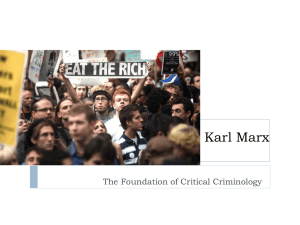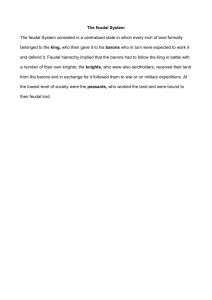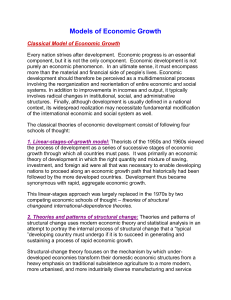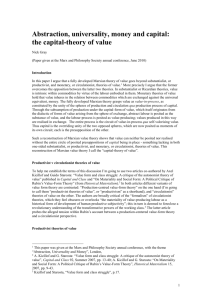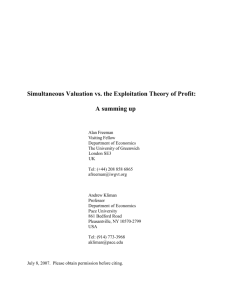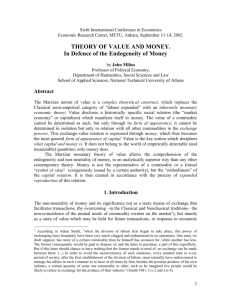3150 OH5 - J. Scott Kenney
advertisement
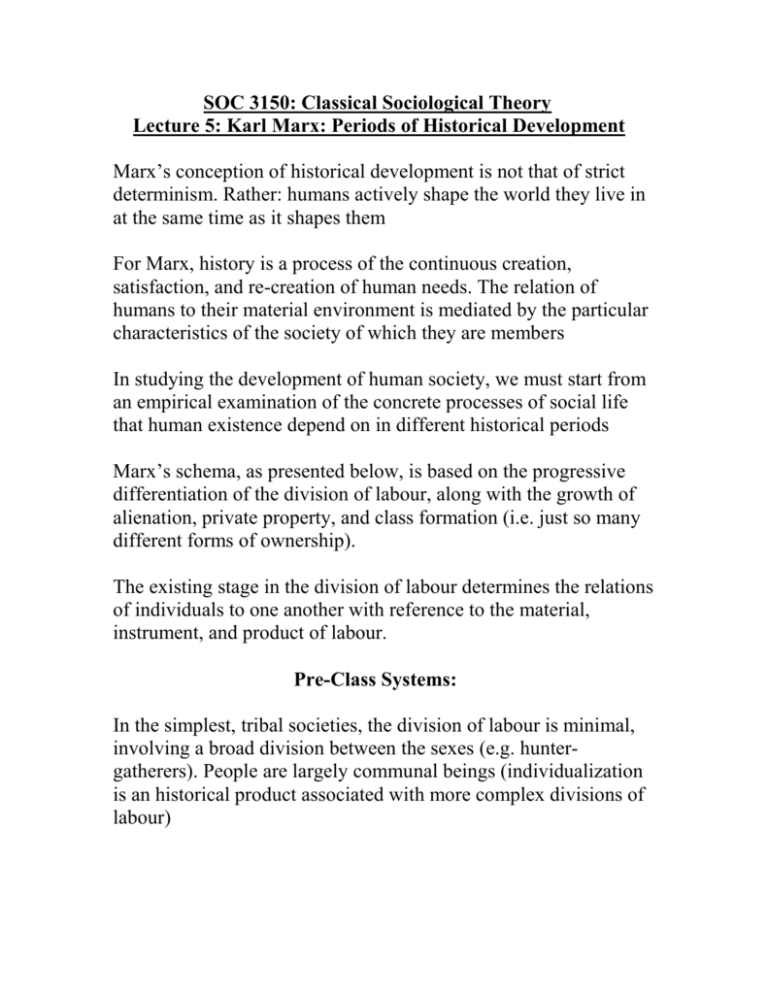
SOC 3150: Classical Sociological Theory Lecture 5: Karl Marx: Periods of Historical Development Marx’s conception of historical development is not that of strict determinism. Rather: humans actively shape the world they live in at the same time as it shapes them For Marx, history is a process of the continuous creation, satisfaction, and re-creation of human needs. The relation of humans to their material environment is mediated by the particular characteristics of the society of which they are members In studying the development of human society, we must start from an empirical examination of the concrete processes of social life that human existence depend on in different historical periods Marx’s schema, as presented below, is based on the progressive differentiation of the division of labour, along with the growth of alienation, private property, and class formation (i.e. just so many different forms of ownership). The existing stage in the division of labour determines the relations of individuals to one another with reference to the material, instrument, and product of labour. Pre-Class Systems: In the simplest, tribal societies, the division of labour is minimal, involving a broad division between the sexes (e.g. huntergatherers). People are largely communal beings (individualization is an historical product associated with more complex divisions of labour) As the technological division of labour advances, this produces a surplus over and above what is needed for survival and exchange appears, fostering greater individualization. Once settled agricultural societies develop, further differentiation in the division of labour results from population growth, conflict between tribes forced into contact, and the subjugation of one group by another (i.e. ethnically based slavery systems). Commodity exchange between groups further adds to social differentiation and interdependence between larger units. Marx distinguished more than one line of development out of tribalism (e.g. the Oriental and the Germanic). One emphasizes private property, the other only its communal possession, with different outcomes (e.g. rural stability vs. expansion and urbanization). The Ancient World: Marx’s analysis of ancient society emphasizes Rome. Key characteristics: - the union of several aggressive, warlike agricultural tribes into a city - its ruling class was founded upon ownership of private property. Population growth leads to expansionist tendencies - organized around the military/territorial expansion - population expansion and militaristic adventures produce an extension of slavery and an increasing concentration of private property - the slaves come to bear the brunt of productive labour, while the patricians form an increasingly separate ruling class monopolizing the benefits this basis for the economy eventually undercuts itself, despite seeking new colonies to exploit, etc. - beyond this, class conflict in Roman society was endemic as early as the late republic (e.g. patricians and plebeians/struggles over usury and corruption) - eventually a pure slave economy emerges, as more and more peasants sink into slavery - despite the increasing size and organization of industrial agriculture, the poverty of the bulk of the population ruins the economy - commerce is further ruined by excessive taxation, trade declines, and, as the state breaks down, people return to agriculture - the internal contradictions of the system – the expropriation of large numbers of people from the means of production – leads to a system based on slavery which disintegrates from within - Feudalism and the Origins of Capitalist Development: Feudal society emerges out of the internal collapse and external destruction of the Roman Empire The barbarian invaders, to administer their territories, adopted elements of their own and the Roman system This centred on the dominant position of the military commander, eventually becoming monarchy. A new nobility forms itself around military retainers supplemented by an educated, Romanized elite Centuries of warfare permanently impoverish the free peasant farmers/soldiers, who become dependent on (enserfed) by the noble landlords and engage in smallscale bonded agriculture The disintegration of feudalism was bound up with the growth of towns (e.g. the 12th century municipal movements, the formation of mercantile and usurers capital, and their operation on a monetary system) Commodity exchange and the use of money enabled more prosperous peasants to discharge feudal duties in monetary form. Towns become dominated by strong guild organizations In England, the earliest transformation of free peasants into wage-labourers begin in earnest in the late 15th century (by this time, the great feudal wars have sapped the resources of the nobility, many free peasants are thrown on the market, and the nobility declines in favour of the monarchy/exchange economy). The enclosure movement sees the nobility, in pursuit of profit, evicting more feudal tenants, the church lands sold off, with more and more poor people concentrating in towns rather than face prosecution under vagrancy laws. By the early 16th century, there were a mass of dispossessed labourers that formed the beginnings of the working class Meanwhile, the rapid expansion of overseas commerce, and the resultant growth of wealth, encouraged increased trade, production, and economic development, as well as legislation against old guild restrictions Increased prices ruined the old nobility and swelled the ranks of wage-labourers, but fostered large profits to manufacturers and traders The English revolution (1688) rapidly extended state power, centralized administration, and hastened the process of transformation of the feudal mode of production into the capitalist one Other developments: - a segment of the old merchant class shifts from purely trading operations to take a part in production - individual producers themselves accumulate capital, moving from production alone into trade (i.e. outside the guilds) - increased division of labour enabling more to be produced per worker over time - the development of technically more efficient means of production: the Industrial Revolution (setting in motion the constant technological innovation characteristic of capitalism). All of these developments paved the way for the transition from a feudal to a capitalist mode of production.

